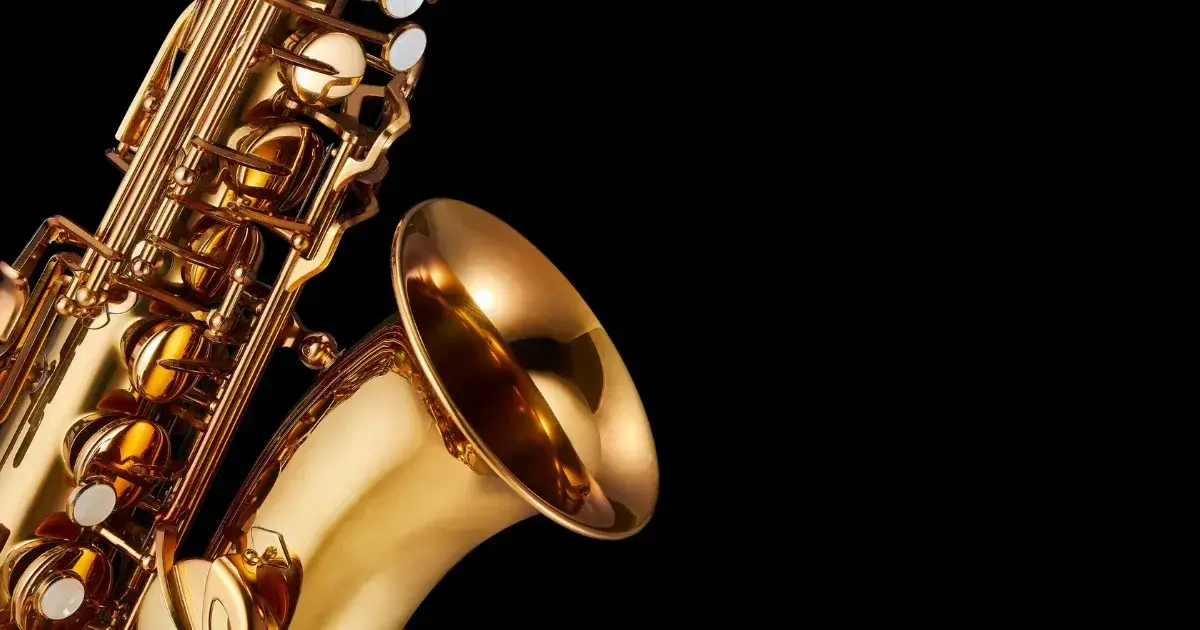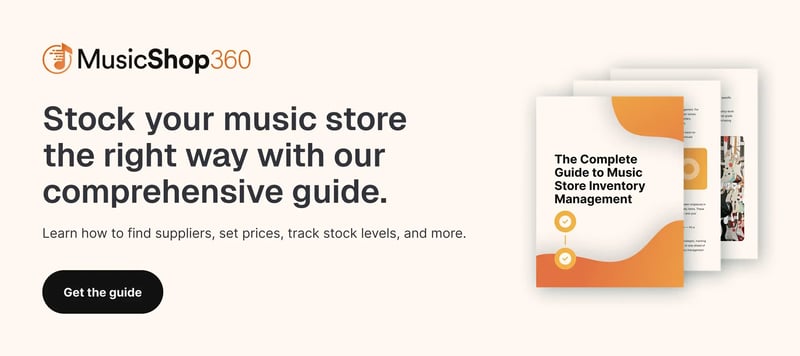
Do you have used instruments lying around your music store?
You might consider these instruments clutter and want to get rid of them as soon as possible, especially if they’re worn and damaged. But with some refurbishment, you can give them a second life.
Many music stores refurbish used instruments. Once brought back to good condition, they can be sold, rented, or even donated. Investing a little time and effort into these instruments can create additional revenue (and maybe even do some good for the community). Restoring preowned items is also better for the environment than simply throwing them away.
In this blog, we’ll discuss the process of recycling used instruments so you can get the most value out of the inventory at your music store.
Let’s get started.
1. Collect Used Instruments
You may already have used instruments at your music store — if you want more of them, there are several common sources:
- Trade-ins: Many music stores allow customers to bring in used instruments as trade-ins. You take the instrument, appraise its value, and give the customer store credit towards another purchase.
- Direct purchases: Sometimes music stores buy used instruments directly from individuals. Accurately appraising them is essential to be sure they can be sold for a profit.
- Consignment: This is when a customer brings in an instrument for a music store to sell. When the store sells it, they pay the customer a commission. Music stores sometimes also repair them for an additional fee.
- Donations: When local musicians have instruments they don’t want or need anymore, sometimes they donate them to music shops.
- Repair work: A customer may bring in an instrument only to find out the repairs cost more than they imagined. If they decide not to pay for the repairs, you may be able to buy it off of them at a reduced price.
There are a variety of reasons why you might receive used instruments. If you find success in refurbishment and resale, these are ways you can receive more.
2. Refurbish Used Instruments
Now that you’ve collected your used instruments, it’s time to prepare them for resale.
Assess Condition
When you restore an instrument, the first step is to assess its condition and determine what repairs are needed. Open a work order, inspect the item, and take detailed notes. Take photos to document wear and tear, too.
Inspect the instrument’s components, like strings, pads, corks, or valves. Check for dents and cracks in metal, wood, or finishes and identify which parts should be replaced.
Order Parts
The next step is to order the necessary replacements. Compare prices online to find the most cost-effective options. If you’re doing a repair you’ve never done before, you may find you need additional tools and supplies. Once you acquire these materials, you’re ready to complete the repair.
Price the Item
Once you’ve made the repair, it’s time to set a price for the item. While you likely won’t be able to price it as highly as a brand-new instrument, the price should reflect its restored condition.
Once you print a barcode for the item, it’s ready to sell. If you put it on the sales floor, remember to specify that the instrument is used and refurbished, which is required by law in the U.S.
Related Read: 12 Ways To Streamline Your Music Store’s Repair Department
3. Resell Used Instruments
Refurbished instruments at affordable prices are a favorite pick for beginners and parents whose children are just starting out. Try creating a display of used, refurbished instruments and place it prominently at the front of your music store. You may see especially high sales of these items in late summer and early fall, as the school year begins.
Try selling restored instruments online, too. If your store has a website, you can post it there. You can also use third-party sites like Reverb, which has a wide selection of used instruments.
Rent Out Instruments
Restored instruments can also be rented to customers. This is another popular option for students in their school band. It may take time for rental fees to cover the cost of the instrument and repairs, but once it does, it generates pure profit.
Donate Instruments
Finally, you can donate these items. Consider giving these instruments to a local school, building goodwill with the community. As long as they’re in fair condition, a local band director would be happy to accept them.
Donating instruments to a school is also a great way to spread awareness of your business. When students need additional supplies, they’ll likely think of your music store first.
Related Read: Music Shop 360 and Selling on Reverb: Set Up in 6 Steps
4. Implement a POS System
You might be thinking, “Refurbishing used instruments sounds like a good idea, but there’s no way I’ll have enough time.” While this process does take time and effort, a modern point of sale (POS) system can lighten the load and speed up these tasks.
Do Repair Work
A POS system with repair work orders is a great resource. With this feature, it’s easy to create a work order, input all of the information you need, assign it to an employee, and track progress throughout the entire process. If an item is donated, you can record who donated it, notes about its condition, and any other significant information in the POS.
Create Reports
POS systems are also great for reporting, you can track costs, revenue, and profit, and create customized sales reports to see how your music store is performing. With clear data, you can determine how successful instrument refurbishing is at your store and make informed adjustments.
These systems also have features for inventory management, so your numbers are accurate and consistent across all of your devices.
Related Read: Work Order Management in 7 Steps With Music Shop 360
Sell More Used Instruments With Music Shop 360
Refurbishing used instruments is a great way to get additional value out of your inventory. Whether you get them from trade-ins, direct purchases, consignment, or donations, restoration gives them a second chance, benefiting your business and reducing waste.
And sure, restoring used inventory takes work — more work than simply purchasing new instruments to sell. But a cloud-based POS system has features to make this process easier — especially if you’re using a solution designed for your industry.
Music Shop 360 is an all-in-one POS solution designed specifically for music stores. With a variety of both general and music-specific features, you have everything you need to run your business.
Inventory management tools help you catalog instruments and prepare them for sale, and work order modules help you stay on top of the entire repair process. Rental modules keep track of each customer, instrument, and rental period, giving you an additional option for refurbished instruments.
To see what Music Shop 360 can do for your business, schedule a demo today!



 by
by 






